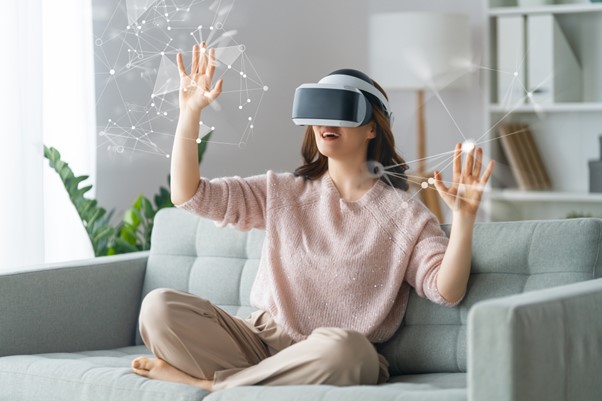Virtual Reality and Agoraphobia: A Modern Approach to Treatment

Introduction
Agoraphobia, an anxiety disorder characterized by a fear of situations where escape might be difficult, can severely limit a person’s daily life. Traditional treatments like cognitive-behavioral therapy (CBT) have been effective, but a new, innovative approach is emerging: virtual reality (VR) therapy.
The Promise of Virtual Reality
Immersive Exposure Therapy
Virtual reality allows therapists to create controlled, immersive environments where patients can face their fears safely. By simulating real-world scenarios that trigger anxiety, VR helps patients gradually desensitize to these situations. This method has shown promise in reducing avoidance behaviors and distress in a shorter time compared to traditional therapies [1].
Personalized Treatment
Personalized VR exposure therapy tailors the virtual environments to the specific fears of each patient. This approach elicits stronger anxiogenic effects, making the therapy more effective by closely mirroring real-life triggers. Personalized VR exposure has been found to be more effective than non-personalized exposure in treating panic disorder with agoraphobia [1].
Role-Play Therapy
Another innovative use of VR is role-play therapy. This method allows patients to practice coping strategies and navigate anxiety-inducing situations within a virtual space. Studies have shown that VR role-play therapy significantly helps individuals with agoraphobia, providing a safe space to confront their fears [2].
Advantages of VR Therapy
Safety and Control
VR therapy provides a safe and controlled environment for exposure therapy. Patients can confront their fears without the risks associated with real-world exposure. This control allows therapists to adjust the intensity and duration of exposure based on the patient’s progress.
Accessibility
With advancements in VR technology, therapy can become more accessible to a broader population. Patients who might have difficulty attending in-person sessions due to severe anxiety or logistical issues can benefit from VR therapy at home under remote supervision.
Cost-Effectiveness
Over time, VR therapy could become more cost-effective than traditional therapy. The initial investment in VR equipment may be offset by the reduced need for extensive therapist-led sessions, as patients can undertake some aspects of the therapy independently.
Approval and Integration into Healthcare
Virtual reality therapy for agoraphobia is gaining recognition in healthcare systems. For the first time, VR treatment has been recommended for use in NHS mental health services in the UK, highlighting its potential as a mainstream treatment option [5].
Conclusion
Virtual reality therapy represents a groundbreaking development in the treatment of agoraphobia. By providing immersive, personalized, and safe environments for exposure therapy, VR is helping patients manage their anxiety more effectively. As technology advances and becomes more accessible, the integration of VR into mental health treatment could significantly improve the lives of those struggling with agoraphobia.
🌐 Sources
- sciencedirect.com – Personalized virtual reality exposure for panic disorder and agoraphobia
- ncbi.nlm.nih.gov – Group cognitive behavioural therapy with virtual reality
- researchgate.net – A controlled study of agoraphobia and the independent effect of virtual reality exposure therapy
- spiritvr.co.uk – Virtual Reality (VR) Intervention for Agoraphobia
- theguardian.com – VR role-play therapy helps people with agoraphobia, finds study
- anxietyhouse.com.au – Virtual Reality Therapy – Anxiety House Brisbane








Responses